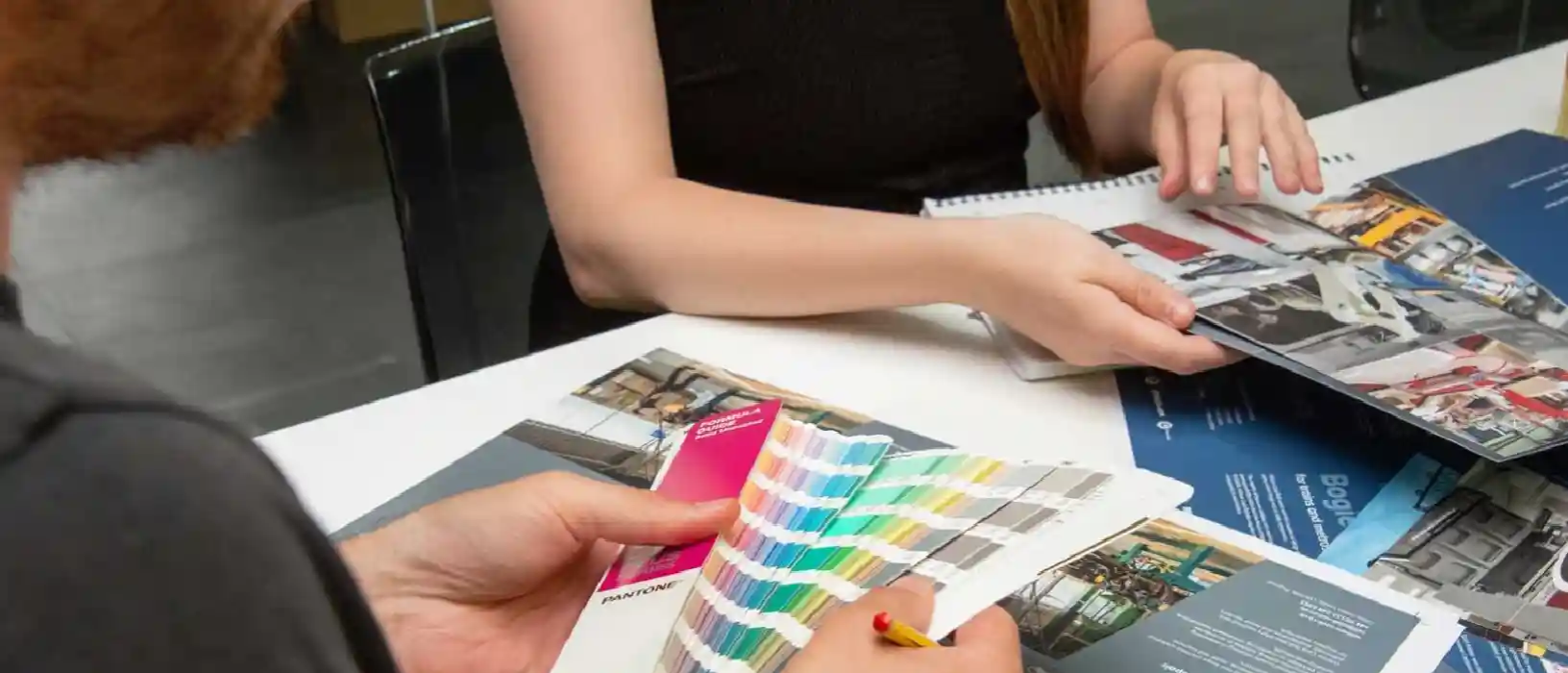Branding isn’t about being the best choice on the market, it’s about being the only choice as far as your customers are concerned. You love your business, you’ve worked hard to build it and you understand it. But how do your customers perceive the business that you’ve worked so hard for?

Brand creation is one of the most crucial, but often overlooked, elements of a business and can be the difference between making a sale and losing out.
Here are six reasons why you should invest in your branding.
1. Your Brand IS Your Business
Have you ever been stuck in traffic and seen a dirty van or truck? That vehicle will likely be representing a business, and its cleanliness (or lack of!) doesn’t send a positive impression to potential customers. In fact, you’re likely to remember the dirt and witty finger graffiti, but forget the business’ name that was hiding beneath it.
It is generally believed that it takes between 5 and 7 interactions for your brand to embed in a potential customer’s mind, and one bad experience can undo any good will gained. Back to the truck and think about Eddie Stobart. His company trucks were regularly cleaned, to ensure that the branding (and the importance of looking after your deliverables) was never tarnished. As an external viewer you gain a sense of Eddie Stobart’s approach as a business through how they treat their brand - they care.
Your branding represents your business. Your maintenance of that identity sends a message, to both your customers and your staff, about who you are, and how much you care.
2. A Unified Approach Gives The Viewer Confidence In Your Business
How many times have you seen a McDonald's logo upside down? Or in green? The answer should be ‘never’, as McDonalds and other highly successful companies invest a lot of time and effort to ensure that their brand is never misused. The golden arches are now one of the most recognised visual assets in the world, with the McDonald’s brand now being so powerful that a whistled five note tune is instantly recognisable the world over.
Not every brand starts out this way, and it takes time, hard work and dedication to get to this point. A unified approach to your branding will give potential customers confidence that you’re operating a professional business. Simple touches such as matching your packaging colour scheme to the invoice inside the package, or your business card design and details being in alignment with your email signature.
These are examples of the first steps to achieving a unified identity, which will enhance your image subconsciously to your customer, and create the impression of a professional, trustworthy company.
Around 59% of shoppers will buy from a business that they know of shoppers will buy from a business that they know, whilst another 21% will buy from the name alone will buy for the name alone, showing that consumer behaviour is a huge factor in setting yourself apart from the competition, whilst amplifying the trust in your business and branding.
3. How You Approach Your Brand Can Shape Your Long-Term Business Goals
So, you’ve now gone to the effort of ensuring every element of your external facing brand is unified, and your target customers are starting to navigate towards you. But what about your staff and any investors?
Effective branding should also be aligned with the business’s long-term goals and should satisfy stakeholder expectations for the future.
A great example of this is the famous Lloyd’s Bank logo; the now iconic rearing black horse represents an evolving business, constantly in motion. It is shown looking backwards however, to remember and acknowledge where the business has come from. So, within one logo you have a balance of evolution and experience, tradition and innovation, and legacy and the future.
As previously mentioned, your brand is effectively the representation of you, your business values, ethics and principles, so having these reinforced and unified internally as well as externally is vital in order to create a stronger impression for all involved. After all, if your staff are wearing your uniform and provide a bad experience, the consumer will remember, and think that they are a reflection of your business in general.
Which leads us neatly on to…
4. Branding Isn’t Just How Your Business Is Portrayed Visually
Think about a situation you’ve experienced from the other side, as a customer/consumer of a particular company. What was your experience like, was it good or could it have been improved? These interactions are a basis for your decision making in the future, whether consciously or not.
How your staff interact with an end user, and the processes they follow, are also part of your brand. If your messaging and tone of voice doesn’t fit for your target market, they’re likely to feel less connected to you, and therefore look elsewhere.
Another issue to consider is the power of social media – if someone has a bad experience with a brand, they are now more likely not just to tell a couple of friends, but to broadcast it on social media, meaning that potentially thousands of other target customers could be put off buying from you, based on what they read online.
5. Bad Branding Also Leaves an Impression (and Not a Good One)
You might think that it wouldn’t be the end of the world if your business loses a bit of reputation due to the above, but ultimately it will cost you money, and time, to rectify. It could even lose you market share when, based on your reputation, customers decide to choose one of your competitors, instead of you.
Cutting corners in the early stages can cost your business greatly in the long term. It takes far more cost and attention to fix mistakes after they’ve happened, than it would have to put the steps in place early on to prevent them.
For example, if you purchase a logo for your business from a discount supplier, it’s likely to be automatically generated from a small sample of prebuilt templates. This means any other business can have exactly the same elements as you, thereby you instantly lose your unique visual offering. And think about the message that sends to your customers – if you look like any other business, why should they choose you over someone else?
6. Invest In a Great Brand – and Then Protect It
A cheap logo can have more of an impact that you might realise. Cut price designers will rarely take care to research your company, your market, or even check if there is another company in the same industry with the same or a similar name to yours.
Invest wisely in a unique brand that is different from every competitor, and then make sure you protect your brand through registering it as a trademark. Not registering your logo and core visual elements leaves you open to being copied by others in order to steal customers who may not realise they’re being hoodwinked.
Sadly, we’ve seen examples of businesses not taking the time to ensure their uniqueness, including one scenario where a company set up a new business using the same name as one of their competitors, succeeding in taking work away from them due to brand confusion, known legally as “passing off”. This ultimately led to lengthy court cases and astronomical legal costs as the original company battled against the new company to try and protect their brand.
This could have been avoided in the first place if the original company had been more careful about protecting their brand, and the second company had done their research.
It’s worth remembering a quote from Ralf Speth, CEO of Jaguar Land Rover:
“If you think good design is expensive, you should look at the cost of bad design.”
Need Help Defining and Establishing Your Brand?
Our team at Hydra Creative are experts in crafting compelling brands that not only represent your business authentically but also resonate with your target audiences. Whether you're building from the ground up or refreshing an existing identity, we ensure every element aligns with your goals and values.
If you're unsure where to start, check out our branding article on where to start when thinking about your business branding to help guide your thinking and set the foundation for a strong, strategic brand.

Let's start creating together
Let Hydra be the solution for your next project.